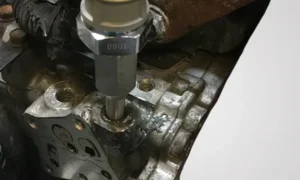Overall sales of painting robots will grow by 10.1% CAGR between 2021 and 2031. East Asia and Europe are likely to account for over half of the global demand for painting robots through 2031.
The global painting robots market grew at a CAGR of more than 2.4 percent between 2016 and 2020. The market for robots is complex, with numerous options. Organizations add value to the market by concentrating on specific end applications and supplying various types of robots, modules, subsystems, tools, or services.
Over the years, dedicated supply chains, design services, and research and development organizations have collaborated seamlessly to provide end-users with optimal solutions. The provision of a consistent categorization of the potential in each type of market is an important step in analyzing the potential for robotics and painting robot technology.
ASEAN countries are emerging as robotics and automation hotspots. The expansion of industrial clusters, green infrastructure, digital investments, talent reskilling, and high-value food industries will not only accelerate the region’s economic recovery but will also lay the groundwork for exponential growth in the painting robots market.
Furthermore, the rapid growth of the automobile, aerospace, consumer durables, and electronics industries has compelled these countries to adopt cutting-edge technologies.
Automation systems are becoming more adaptive and intelligent, with the ability to change their behavior on their own to increase productivity or lower unit costs. Automated painting robots will be able to deal with significantly more task-to-task unpredictability as artificial intelligence and sensor technology advance.
In applications where uniform painting, surface finish quality, increased productivity, and shorter output times are required.
The construction industry is no exception, as it is notorious for being unorganized and labor-intensive. Robots are used for a variety of tasks, including site design, bricklaying, and other tasks as needed.
Humans, on the other hand, plan large modern buildings and structures that can be hazardous to health due to lead and VOC emissions from synthetic paints.
Painting robots have eliminated this problem by allowing for non-human intervention, ensuring compliance with Occupational Safety and Health Administration (OSHA) standards, and adding maneuverability to work at high altitudes, gaining benefits such as faster drawing processes, reduced work capacity, shorter lead times, and lower building costs, all of which improve quality, working conditions, and safety.
Key Market Segments Covered
By Type:
- Pedestal Robots
- Robotic Arms
By Payload:
- Up to 5 Kg
- Up to 15 Kg
- Up to 45 Kg
By Function:
- Painting
- Waterborne
- Solventborne
- UV Cured
- Painting, Spraying & Coating
By Reach:
- Upto 1,000 mm
- Upto 1,500 mm
- Up to 2,000 mm
- Up to 2,500 mm
- Up to 3,000 mm
By Configuration:
- 6 Axis
- 7 Axis
By Application:
- Atomizer
- Air Gun
By End-Use Sector:
- Transportation
- Automotive
- Railways
- 2 & 3 Wheelers
- Aerospace
- Consumer Appliances
- Foundry & casting
- Furniture
- Textiles
- Construction
- Heavy Engineering Equipment
- HVAC & Refrigeration
- Sanitaryware
- Others
By Region:
- North America
- Latin America
- Europe
- East Asia
- South Asia-Pacific
- Middle East & Africa



































